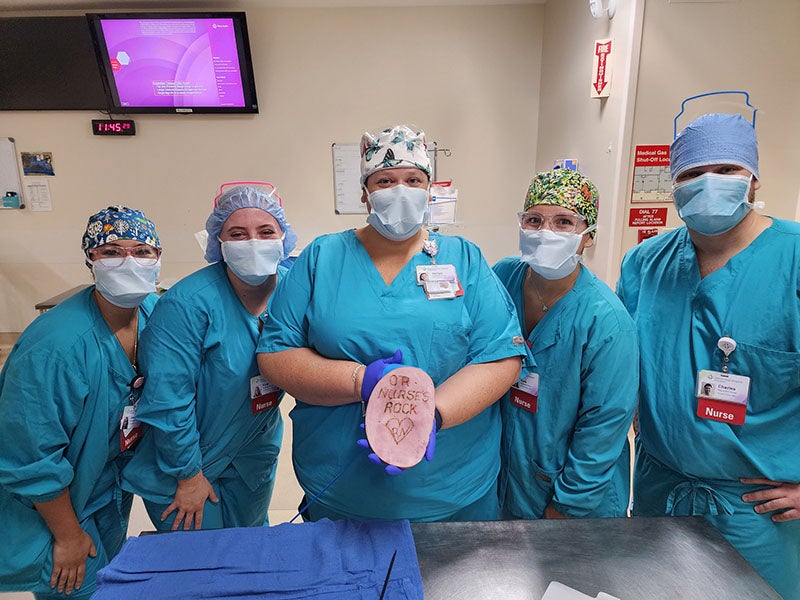Your Stories: Saint Francis Perioperative Nurses Learn about Electrosurgery
August 26, 2024Categories: Colleague Corner
Brian K. Burrier, MSN, RN, CNOR-CARD, Perioperative Nursing Professional Development Specialist at Saint Francis, is always trying to come up with fun ways to present education to the perioperative staff. One of his favorite classes to teach is on electrosurgery and electrosurgical cautery. The class begins with a didactic interactive lecture before a hands-on simulation environment.

Nursing colleagues participated in an interactive education session on electrosurgical cauterization as part of Periop 101 curriculum.
The nurses learn about electrosurgery and the importance of patient grounding, the necessity of the electrode dispersive pad and proper placement, and how the principles of bi-polar cautery work, including how it delivers a lower by more concentrated coagulation energy and how it does not need to be grounded because it completes its own electrical circuit.
Since the adoption of the Smoke Evacuation Law in January 2024, all electrocautery and smoke-generating devices are required to have a smoke evacuation system. This is a tremendous improvement in the health and safety of staff and patients. During the electrosurgery training, periop nurses utilize a traditional cautery pencil and a smoke evacuation cautery pencil to see the difference in the smoke plume, underscoring the importance of the smoke evacuation system.
Electrosurgical cauterization is not in a standard perioperative nurse’s scope of practice. However, there is no better way to learn about how various cautery pencil tips work than to use them, so Brian has the nurses in class cauterize pieces of ham, chicken breast, and oranges. He begins by covering PPE and safety instructions, then demonstrates how different energies and cautery tips affect the “tissue.” Participants then learn by utilizing the various tips to create art, learning how broad cautery tips affect a larger area while thinner needlepoint tips are more precise and direct more energy.
While the perioperative nurses don’t perform cauterization procedures themselves, it is important for them to know why the surgery needs a particular cautery tip, mode, or energy selection, how to assess the patient, and how to assist with electrosurgery safely.
“This most recent class was my tenth time teaching about electrosurgery, and it just gets more and more fun every time!” said Brian. “I look forward to teaching this class every quarter and the staff always say how much they learned and enjoyed it. The art that was produced was phenomenal; I really enjoy seeing what they can come up with. I am extremely thrilled to be able to teach electrosurgery as part of the Periop 101 curriculum and, more importantly, continue to make education fun!”
Submitted by Brian K. Burrier, MSN, RN, CNOR-CARD, Perioperative Nursing Professional Development Specialist, Saint Francis Hospital.
Have a story you want to share? Submit your story at TrinityHealthOfNE.org/YourStories.
